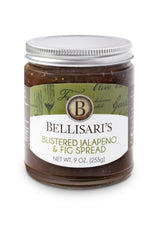Once I’ve decided on a topic for my weekly blog post, I often find myself starting to “compose” the blog in the back of my mind. This week, all I could hear in my brain was that TV commercial that had a dog thinking, “Bacon, bacon, bacon, bacon, bacoooon, BACON!!!” as he ran to get a bacon flavored treat. Remember that one? When it comes to eating bacon by itself or even adding it to a salad or side dish, my brain does something similar to the dog in the ad -- bacon, baco...BACON! 😆
We all grew up eating thin bacon, little strips so insubstantial they would buckle and bend in the pan, and when overcooked would simply break apart like old paper left in the sun. Then we discovered thick-cut, or "slab," bacon, and were surprised to find that bacon was actually meat, and as such could be chewed, and that when chewed it tasted even better.
Bacon has been having a moment over the past few years. Although it's been a presence on American breakfast tables for decades, it got a bad rap for being unhealthy. Now its image is being rehabilitated.
I’m not going to say bacon is necessarily a healthy choice, but it's not the worst thing you can eat, either. Two average strips of raw bacon have 234 calories and 36 percent of your daily allowance of saturated fat. But two strips of fried bacon have 86 calories and 10 percent of your daily allowance of saturated fat, as well as 6 grams of protein.
Keep in mind, however, that bacon is a processed meat, which means it's been treated with nitrites for preservation. Eating lots of processed meats has been linked to an increased risk of colorectal cancer, as well as heart failure and other diseases. However, two strips of bacon — with the grease poured off — along with a fried egg once a week is probably OK.
In the US, most bacon gets consumed in the morning as part of breakfast, and this accounts for at least seventy percent of the total consumption. However, now it’s common to find bacon in other meals such as burgers, salads, and sandwiches.
When you’re food shopping and see “Center-cut” bacon, you might think this is thick bacon, but it’s not. So what is thick-cut bacon, and regular bacon, and is there a difference in nutritional value? (Don’t get me started on Canadian bacon.🙄)
Center cut bacon just means that the fattier ends of the slab are trimmed off before it’s sliced. That’s why the slices are shorter.
Would it surprise you to find that besides meatiness, the strongest factor by far of which bacons won in a recent taste test turned out to be thickness? It wasn’t simply that the brawnier strips, which ranged from 1/8 inch to 1/5 inch, boasted a more satisfying chew and cooked up to a just-firm crispiness that never shattered or crumbled. Heftier strips were also smokier strips. A thicker slice has more of the surface area where smoke is deposited included with the slice. 1/16 of an inch is the standard thickness of bacon slices. Thick-cut bacon is about double that.
Now that you know and understand that not all bacon is created equal, how do you know when to use thin-cut and when to use thick-cut?
In an article I read recently, an amateur cook wrote that her rule of thumb is this: Thin for wrapping. Thick to eat on its own or to cube for mixing into other dishes. That seems like a logical, smart, and easy-to-remember rule of thumb to me.
We have several delicious recipes on the website that feature bacon in the ingredient list. These Bellisari’s Sweet Potato and Bacon Tots are one of my favorite ways to use bacon!






